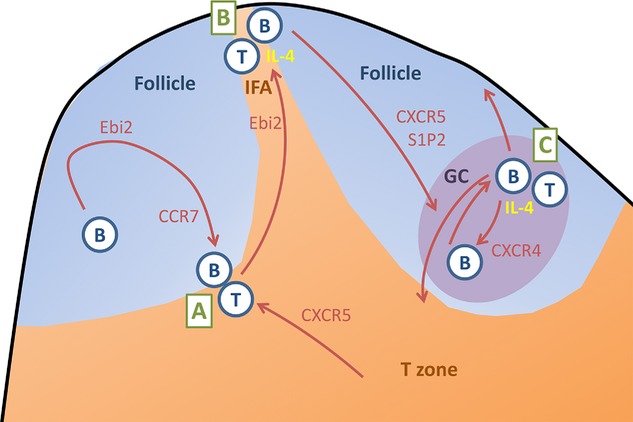Figure 1.

Cognate interactions: B and T lymphocytes, brothers and sisters moving hand in hand. (A) An initial interaction at the T–B interphase of secondary lymphoid organs is guided by the balance of sensitivity to Ebi2, CCR7, and CXCR5 ligands. CD40 ligation during cognate T cell–B cell interaction induces loss of CCR7 and increased Ebi2 sensitivity, followed by B-cell movement toward the interfollicular area (IFA) 6. (B) In interfollicular areas B cells and T cells may undergo prolonged interaction, probably exchanging IL-4 that may lead to the induction of Bcl6 and downregulation of Ebi2. (C) This finally leads to CXCR5- and S1P2-mediated clustering in the follicle centre, where B cells and T cells can differentiate as GC cells. Differentiation inside GCs involves further cognate T–B cell interactions leading to further selection and differentiation of GC B cells.
